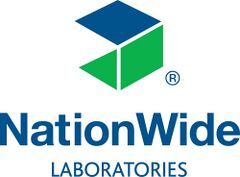Bilirubin is formed from the metabolism of heme groups in the liver, spleen and bone marrow and is taken up and conjugated by hepatocytes before excretion in the bile. Increased levels are associated with accelerated haemolysis, hepatobiliary disease and cholestatic disorders. Bilirubin is a fairly crude marker of hepatic function.
Small animals
Causes of hyperbilirubinaemia
- Biliary obstruction and cholestasis (intra or posthepatic)
- Reduced hepatocellular function (loss of >70% of functional hepatocellular mass)
- Haemolysis (intravascular or marked extravascular)
Complementary tests
The differentiation of total serum bilirubin into direct (conjugated) and indirect (unconjugated) bilirubin may be performed but is of strictly limited diagnostic value. As a rule of thumb, >90% of bilirubin must be either direct acting or indirect acting before it is of diagnostic value (direct acting indicating biliary tract obstruction and indirect acting indicating haemolysis). A haemogram should be used to rule out haemolysis. Bile acids will be elevated due to loss of hepatocellular mass or biliary obstruction but not due to haemolysis. Marked increases in ALP and GGT will be seen with posthepatic cholestasis.
Equine
Causes of hyperbilirubinaemia
- Anorexia
- Biliary obstruction and cholestasis (intra or posthepatic)
- Reduced hepatocellular function (particularly due to acute hepatic failure)
- Haemolysis (intravascular or marked extravascular)
- Intestinal obstruction and a variety of other serious systemic diseases
Extrahepatic causes for example, anorexia, other systemic disease may see an increase inbilirubin of up to 150umol/l
Complementary tests
In contrast to small animals, only modest increases in direct acting bilirubin are seen in either liver failure or in cholestasis. Where direct acting bilirubin forms >25-50% of the total bilirubin, this indicates significant cholestasis, which may be intra- or post hepatic.
